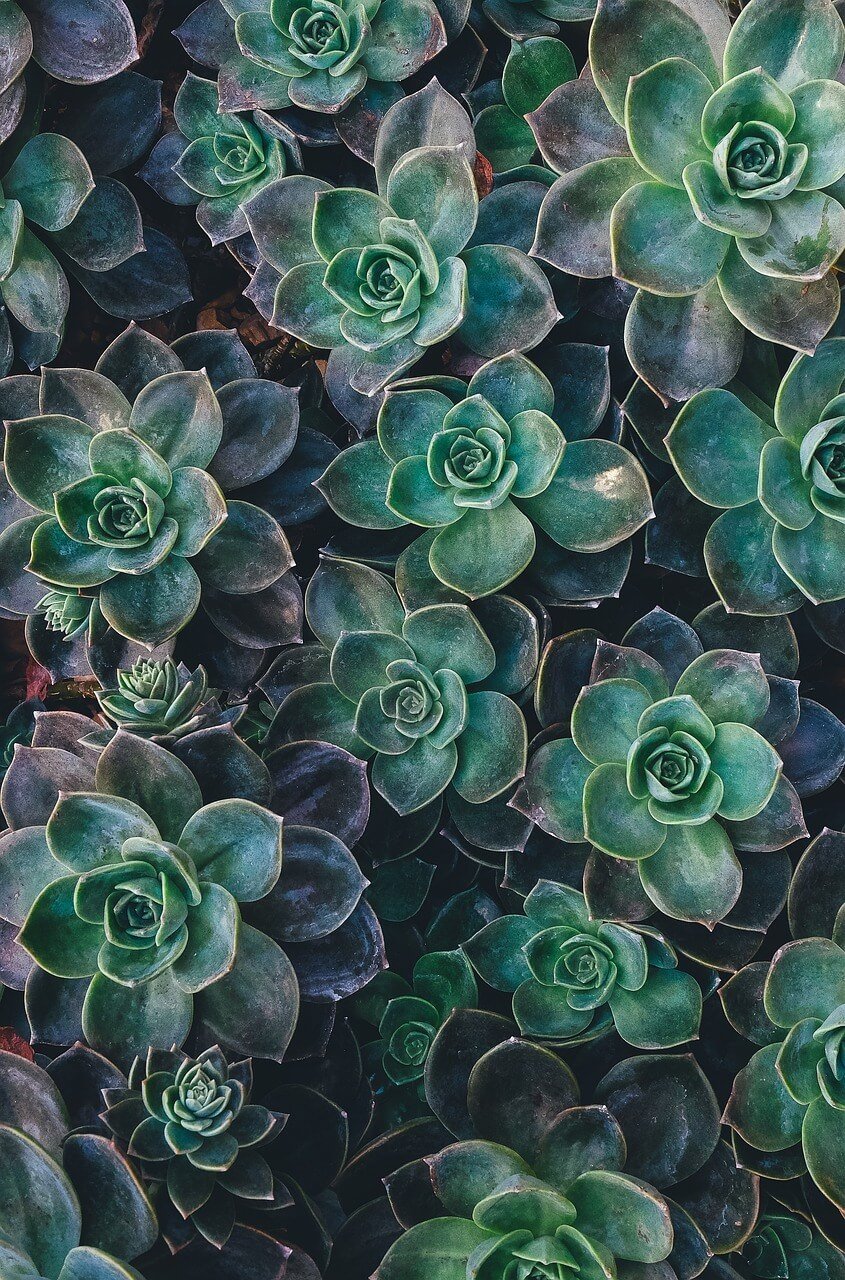Have you ever wondered what it takes to create a thriving garden? Whether you’re a novice or an experienced gardener, understanding the basic needs for a garden is crucial. From the right amount of sunlight to proper watering and soil quality, these essential elements form the foundation for a successful garden. In this article, we will explore the key components that every aspiring gardener should know, allowing you to cultivate a lush and vibrant garden space. So, let’s dig in and discover the secrets to achieving a flourishing garden!
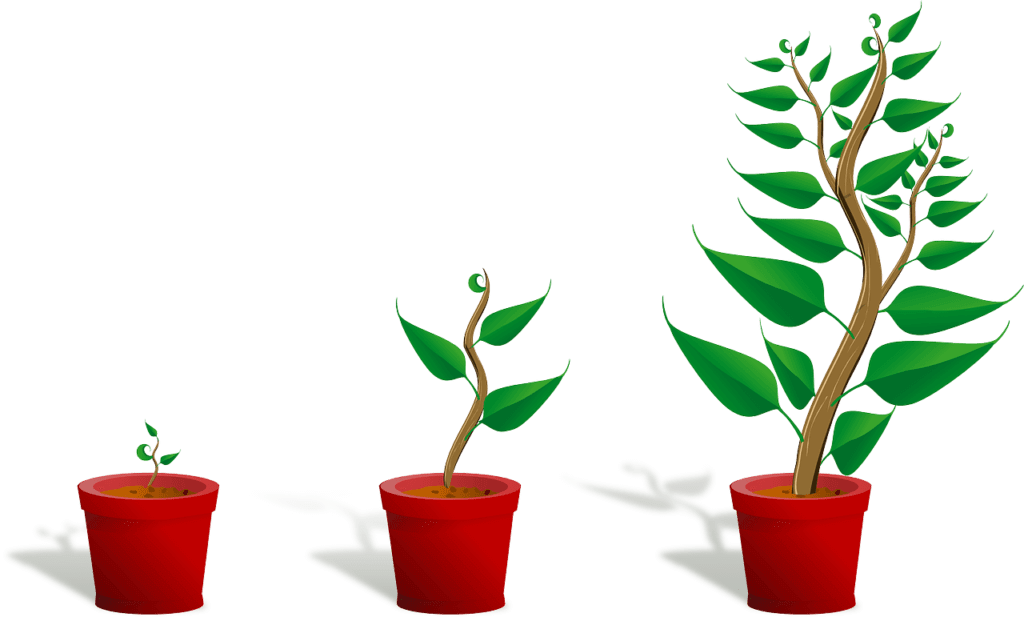
Soil
Type of soil
The type of soil used in a garden plays a crucial role in determining the success of the plants. There are different types of soils, such as sandy soil, clay soil, and loam soil. Sandy soil is loose and drains quickly, but it may require more frequent watering as it doesn’t retain moisture well. On the other hand, clay soil is heavy and can become compacted, making it difficult for plants to access water and nutrients. Loam soil, which is a combination of sand, silt, and clay, is considered the ideal soil type for gardening as it offers good drainage while retaining moisture and nutrients.
Soil pH
The pH level of the soil is another important factor to consider when planning a garden. pH is a scale that measures the acidity or alkalinity of the soil, with a scale of 1 to 14. Most plants prefer a slightly acidic to neutral pH range of 6 to 7.5. However, some plants, like blueberries, prefer acidic soil with a lower pH. It is essential to test the soil’s pH level using a soil testing kit and adjust it accordingly using soil amendments or fertilizers to create an optimal growing environment for your plants.
Soil fertility
Soil fertility refers to the soil’s ability to provide essential nutrients to plants for their growth and development. Fertile soil contains an adequate supply of macronutrients, such as nitrogen, phosphorus, and potassium, as well as essential micronutrients like iron, zinc, and manganese. Enhancing soil fertility can be achieved through organic matter additions like compost or well-rotted manure, which not only provide nutrients but also improve soil structure and water-holding capacity. Regular soil testing can help determine the nutrient levels in the soil and guide proper fertilization strategies.
Sunlight
Amount of sunlight
Sunlight is a crucial factor for plant growth as it drives photosynthesis, the process by which plants convert sunlight into energy. Most flowering plants require at least six hours of direct sunlight each day to thrive, while some shade-loving plants can tolerate less. Before choosing plants for your garden, it is vital to assess the amount of sunlight the area receives throughout the day and select plants accordingly.
Sun exposure
When considering sun exposure in your garden, it is important to note the orientation of your garden beds and any nearby structures or trees that may create shade. South-facing gardens generally receive more sunlight throughout the day, while north-facing areas may be more shaded. To maximize sun exposure, it may be necessary to prune nearby trees or strategically plan the layout of taller plants to avoid casting excessive shade on sun-loving plants.
Shade tolerance
While some plants thrive in full sun, others are more shade-tolerant and can still produce beautiful foliage or flowers in partially shaded areas. Ferns, hostas, and impatiens are a few examples of plants that can thrive in shady conditions. It’s essential to select plants that are suited to the amount of shade in your garden to ensure their success and overall garden aesthetics.
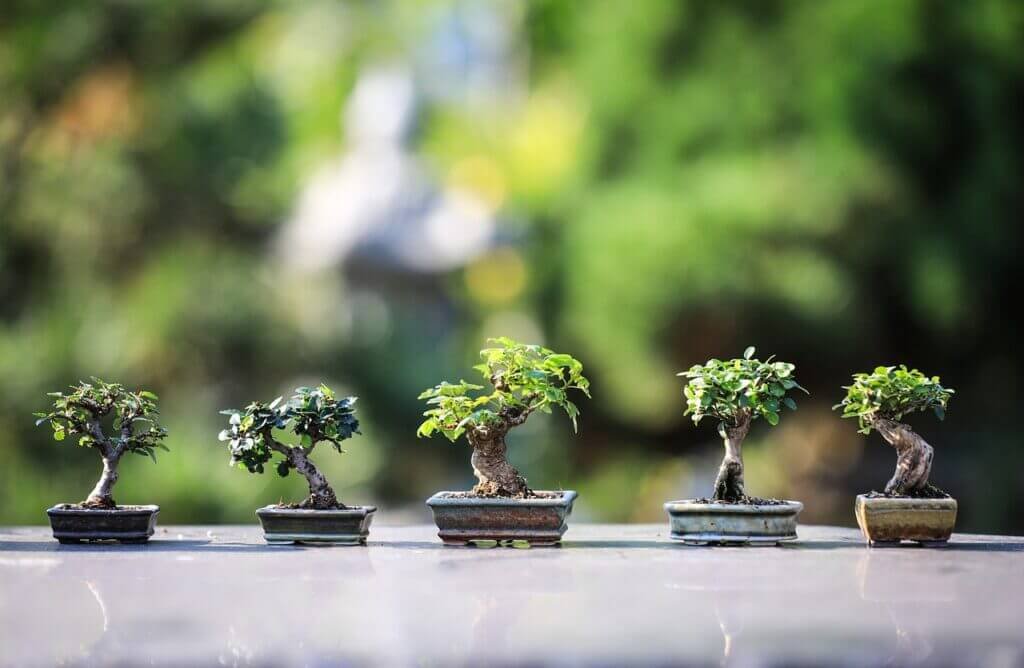
Water
Watering frequency
Water is essential for plant growth and development. The frequency of watering your garden depends on several factors such as soil type, weather conditions, and the specific needs of the plants. Watering needs to be regular but not excessive to avoid waterlogging and promote healthy root development. As a general rule, it is better to water deeply and less frequently to encourage plants to grow deeper roots and become more resilient to drought conditions.
Watering method
The method of watering can greatly affect plant health. Directing water at the base of the plants or using drip irrigation systems allows the water to reach the roots efficiently and minimize water evaporation. Avoid wetting the leaves excessively as this can lead to fungal diseases. Additionally, using rainwater or recycled water is an eco-friendly approach to watering your garden and can help conserve water resources.
Drainage
Good drainage is crucial for preventing waterlogged soil and root rot. If your soil does not naturally drain well, you can improve drainage by adding organic matter or using raised beds. Adequate drainage also prevents the accumulation of excess salts in the soil, which can be detrimental to plant health. Regular monitoring of soil moisture levels and adjusting watering practices accordingly is key to maintaining optimal drainage in your garden.
Temperature
Climate suitability
Different plants have specific temperature requirements for optimal growth. When planning a garden, it’s important to consider the local climate and choose plants that are suitable for your region. Some plants thrive in cooler climates, while others prefer warmer temperatures. Understanding the hardiness zone of your area can help you determine the right plants to grow and ensure their survival throughout the seasons.
Frost protection
In colder regions, frost can pose a threat to garden plants. Taking measures to protect your plants from frost, such as covering them with frost blankets or bringing potted plants indoors, can help prevent damage. Additionally, selecting frost-tolerant plants can ensure that your garden still thrives even during periods of colder weather.
Heat resistance
Just as cold temperatures can impact plant growth, excessive heat can also be detrimental to your garden. Some plants can tolerate higher temperatures better than others. Providing shade, mulching the soil, and ensuring proper irrigation can help protect plants from intense heat and prevent moisture loss. Choosing heat-resistant plant varieties suited to your region can also contribute to a successful garden.
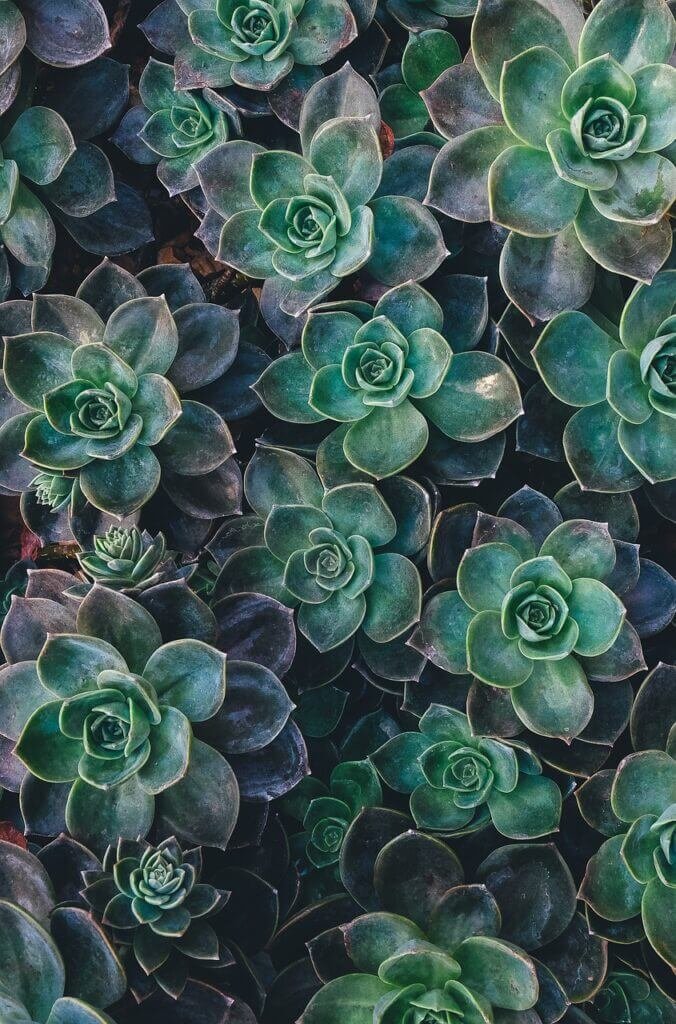
Nutrients
Macronutrients
Macronutrients are essential nutrients that plants require in larger quantities. These include nitrogen (N), phosphorus (P), and potassium (K). Nitrogen promotes leaf and stem growth, phosphorus supports root development and flowering, and potassium enhances overall plant health and resistance to diseases. Understanding the macronutrient needs of different plants and providing proper fertilization or soil amendments can help ensure healthy growth and abundant harvests.
Micronutrients
While plants require macronutrients in larger quantities, they also rely on micronutrients for various biochemical processes. Micronutrients are essential elements such as iron (Fe), zinc (Zn), manganese (Mn), and copper (Cu) that plants need in smaller quantities. Deficiencies in micronutrients can lead to stunted growth, yellowing leaves, or other nutrient-related disorders. Conducting soil tests and providing micronutrient-rich fertilizers or soil amendments can help address any nutrient imbalances and promote plant health.
Fertilizer application
Applying fertilizers correctly is crucial for plant growth and soil fertility. It is essential to follow recommended application rates and timing based on the specific needs of your plants. Over-fertilization can lead to nutrient imbalances and environmental pollution, while under-fertilization can result in nutrient deficiencies and poor plant health. Organic fertilizers, such as compost and manure, provide slow-release nutrients and improve soil structure over time. Synthetic fertilizers can offer precise nutrient ratios but should be used with caution to avoid overuse.
Space
Available area
Assessing the available space in your garden is vital for planning and selecting suitable plants. Consider the size, shape, and conditions of the area you have to work with. Whether you have a large, open garden or a small balcony, there are various ways to utilize the space efficiently and create a beautiful garden.
Plant spacing
Proper plant spacing is crucial to ensure each plant has enough room to grow and access necessary resources. Crowded plants may compete for sunlight, nutrients, and water, leading to stunted growth and increased risk of diseases. On the other hand, leaving too much space between plants can result in wasted space and inefficient use of resources. Researching the recommended spacing for each plant variety can help you plan the layout of your garden for optimal growth and aesthetics.
Companion planting
Companion planting involves growing different plants together to maximize their growth potential and deter pests. Some plant combinations, such as planting marigolds to repel aphids or basil to enhance tomato growth, can provide mutual benefits. Proper companion planting can enhance pollination, nutrient uptake, and pest control in your garden. Understanding the compatibility of different plants and their complementary qualities can help create a harmonious and productive garden.
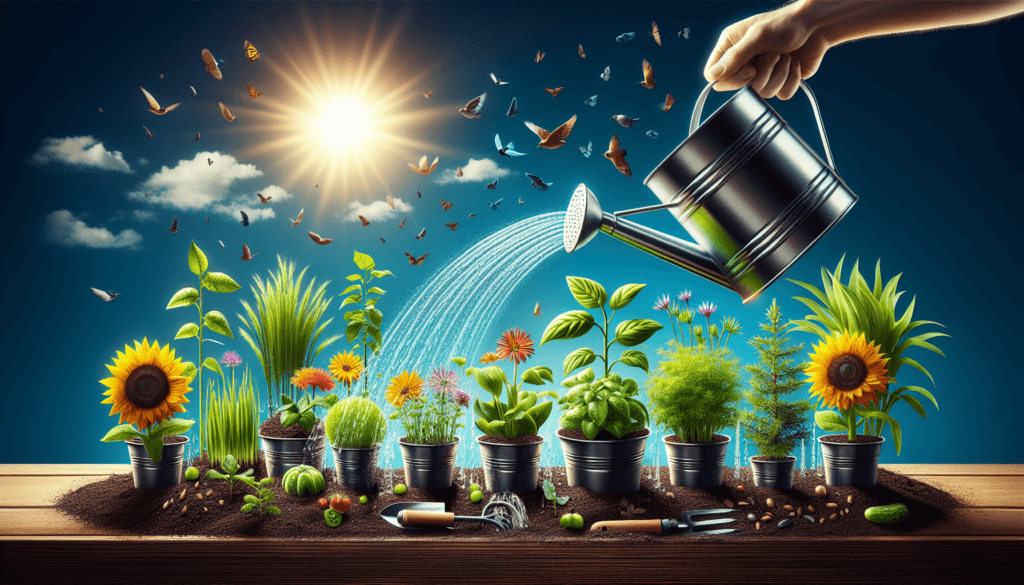
Air
Air circulation
Good air circulation is essential for maintaining healthy plants. Stagnant air around plants can lead to moisture buildup and increase the risk of fungal diseases. Proper spacing between plants, pruning to remove dense foliage, and strategic placement of plants to allow airflow can contribute to good air circulation in your garden. It’s also important to avoid overcrowding your garden to ensure each plant has enough space for adequate air exchange.
Pollution prevention
If you live in an urban or industrial area, air pollution can pose a threat to your garden. Pollution from vehicle exhaust, factories, and other sources can negatively impact plant health. Consider planting pollution-tolerant plants or implementing measures such as using air-filtering plants, installing barriers like hedges, or creating a green screen to reduce the impact of pollutants on your garden.
Protection
Pest control
Pest control is an important aspect of garden maintenance. Insects, rodents, and other pests can damage plants and compromise their health. Implementing integrated pest management practices that include both preventive and reactive measures can help keep pests at bay. This approach may involve using physical barriers, natural predators, organic pest repellents, or targeted pesticide applications when necessary. Regular monitoring of plants for signs of pest infestations can help catch and address problems early on.
Weed management
Weeds compete with garden plants for resources and can quickly take over if left unchecked. Implementing effective weed management strategies can help maintain the health and aesthetics of your garden. Techniques such as mulching, hand-pulling, or using natural weed suppressants can help prevent weed growth. It’s essential to address weeds promptly before they become established and to regularly monitor your garden for new weed growth.
Disease prevention
Diseases, such as fungal infections or viral diseases, can affect the overall health and productivity of your garden. Proper sanitation practices, regular inspections, and good plant hygiene can help prevent the spread of diseases. Avoiding overwatering, providing adequate spacing between plants, and promptly addressing any signs of disease can help mitigate the risk of infection. Additionally, selecting disease-resistant plant varieties is a proactive approach to disease prevention.
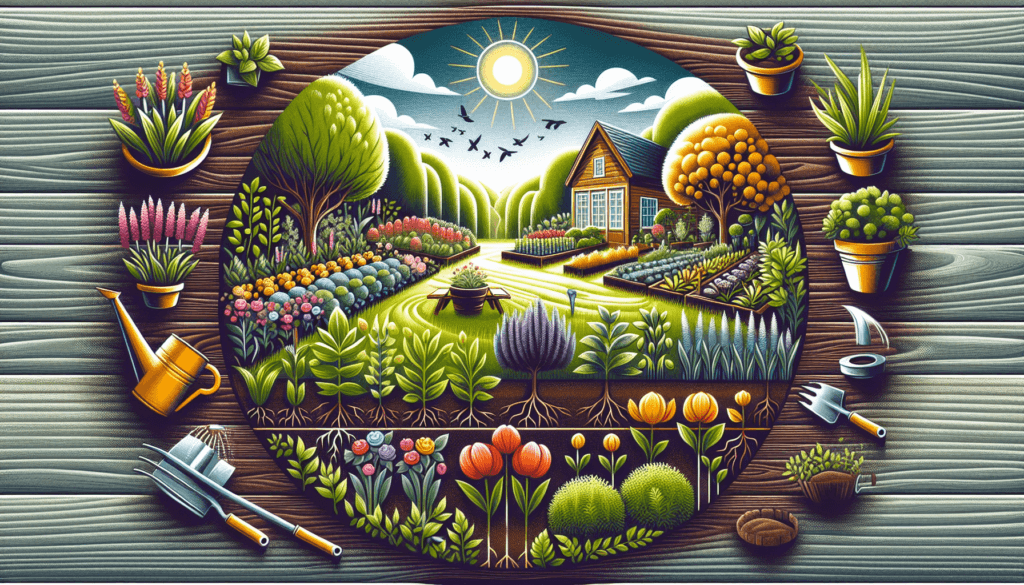
Maintenance
Pruning
Pruning is an essential maintenance task for promoting healthy growth and maintaining the shape and structure of plants. Regular pruning removes dead or damaged branches, improves airflow, and stimulates new growth. Each plant species has specific pruning requirements, so it’s important to research and understand the proper pruning techniques and timing for your plants.
Mulching
Mulching offers multiple benefits for garden plants. Applying a layer of organic mulch, such as wood chips or straw, around plants can help conserve moisture, suppress weed growth, regulate soil temperature, and improve soil fertility as the mulch breaks down. Regularly replenishing the mulch layer can ensure these benefits are maximized and contribute to a low-maintenance and thriving garden.
Regular inspections
Regularly inspecting your garden allows you to identify and address any issues promptly. By examining plants for signs of pests, disease, nutrient deficiencies, or other problems, you can intervene before serious damage occurs. Regular inspections also provide an opportunity to assess plant health, monitor growth progress, and proactively maintain the overall well-being of your garden.
Tools and Equipment
Basic gardening tools
Having the proper tools is essential for efficient and effective gardening. Basic gardening tools include a trowel, pruning shears, garden fork, rake, shovel, and watering can. These tools help with tasks such as planting, digging, weeding, and watering. Choosing high-quality tools that are appropriate for your gardening needs can make gardening easier and more enjoyable.
Irrigation system
Installing an irrigation system can simplify watering your garden and ensure consistent and efficient water distribution. Options include drip irrigation systems, soaker hoses, or sprinklers. An irrigation system can help save time and water by delivering water to the roots of plants directly, minimizing evaporation and runoff. It’s important to consider the specific needs of your plants and the layout of your garden when selecting and installing an irrigation system.
Gardening gloves
Gardening gloves are a must-have for protecting your hands from cuts, blisters, and exposure to chemicals or allergens. They provide a barrier between your hands and potentially harmful elements in the garden, such as thorns, sharp tools, or irritating plant sap. Comfortable, well-fitted gloves made from durable materials can make gardening more enjoyable and protect your hands from unnecessary injuries.
In conclusion, creating a successful garden requires careful consideration of various factors. Ensuring the right soil type, pH level, and fertility, as well as providing suitable amounts of sunlight, water, and nutrients, are essential for healthy plant growth. Proper planning for space utilization, air circulation, and pollution prevention can further enhance the garden environment. Adequate protection against pests, weeds, diseases, and regular maintenance tasks like pruning and mulching contribute to a thriving garden. Lastly, having the necessary tools and equipment, such as basic gardening tools, irrigation systems, and gardening gloves, can make gardening tasks more efficient and enjoyable. By paying attention to these basic needs, you can create a beautiful and flourishing garden.

